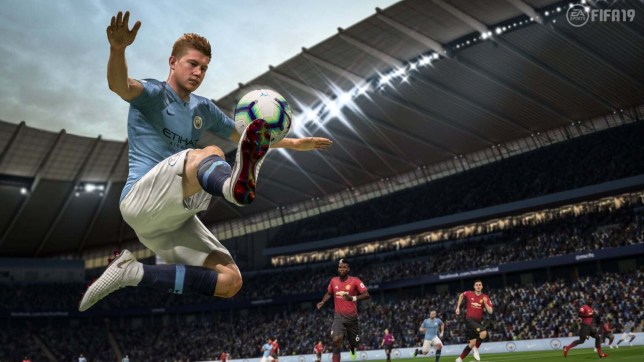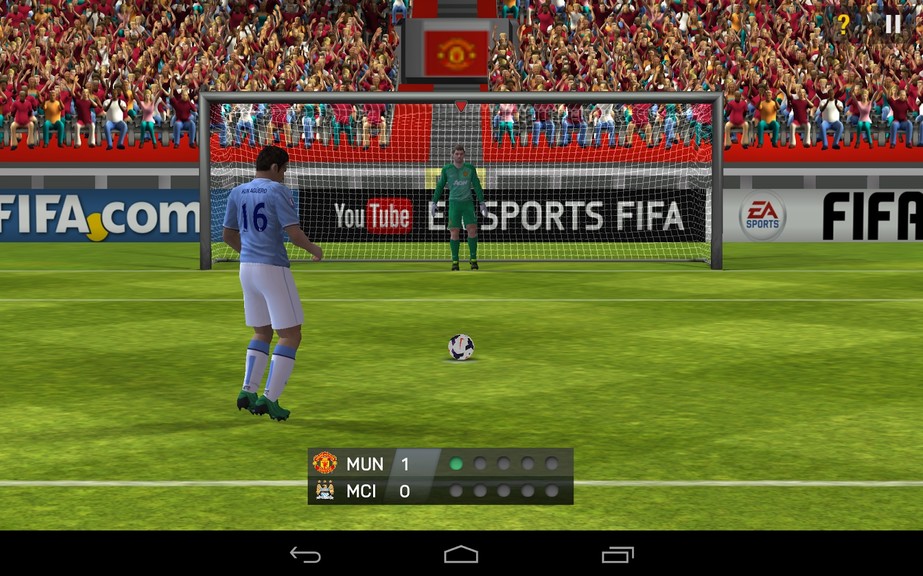We Timed Every Game. World Cup Stoppage Time Is Wildly Inaccurate.

The second half of Iran and Morocco’s tightly contested group match contained nothing too out of the ordinary by World Cup standards. Each side used all three substitutes; there was only one booking; no goals were scored. In a group with Spain and Portugal, both teams presumably were eager to steal a crucial three points and break the 0-0 tie. When the game reached the 90-minute mark, the fourth official raised the electronic board to indicate six minutes of added time.
It should have read 14 minutes.
It’s no secret that the stoppage time in soccer is often inaccurate, but it’s not easy to know exactly how inaccurate. This is unique to soccer — particularly when held against other major sports. In basketball, tenths of seconds can be decisive and are often exhaustively reviewed for accuracy. In football, pundits and fans measure coaches by the nuances of their clock management. But without an official clock in view of spectators and no dedicated timekeeper, the duration of each soccer game is solely up to the discretion of the referee. This, in turn, affects strategy as players and teams that are eager for a game to end find ways to stall.
With this in mind, we decided to test the accuracy, or lack thereof, of the referees’ stoppage time decision made at each half. Using a stopwatch and a team of patient timekeepers, FiveThirtyEight meticulously tracked and categorized every stoppage during the first 32 games played of the World Cup — a total of 3194 stoppages in all, or one every 58 seconds.
Our findings confirmed what avid fans already know: Actual stoppage time is a wildly inaccurate measure of how long the game was actually stopped. The average added time flashed on the board for these 32 games was 6:59, which includes both halves. By our calculations — which adhered to FIFA’s rules on the matter — the time that should have been added to each game was 13:10. This means stoppage time was roughly half of what it should have been for most games.
| Stoppage time | ||||||
|---|---|---|---|---|---|---|
| Home | Away | Minutes ball in play | Expected | Actual | Diff.* | |
| Russia | Saudi Arabia | 55:27 | – – | 10:27 | 06:45 | -3.7 |
| Egypt | Uruguay | 63:02 | – – | 09:25 | 07:15 | -2.2 |
| Portugal | Spain | 57:23 | – – | 14:08 | 05:51 | -8.3 |
| Morocco | Iran | 44:36 | – – | 18:49 | 08:00 | -10.8 |
| France | Australia | 55:24 | – – | 11:25 | 06:30 | -4.9 |
| Peru | Denmark | 51:41 | – – | 13:39 | 08:03 | -5.6 |
| Argentina | Iceland | 60:03 | – – | 08:44 | 06:09 | -2.6 |
| Croatia | Nigeria | 54:57 | – – | 10:08 | 05:58 | -4.2 |
| Brazil | Switzerland | 59:30 | – – | 15:32 | 08:52 | -6.7 |
| Costa Rica | Serbia | 57:02 | – – | 12:35 | 09:36 | -3.0 |
| Germany | Mexico | 58:41 | – – | 08:55 | 04:06 | -4.8 |
| Sweden | S. Korea | 51:21 | – – | 14:58 | 06:19 | -8.7 |
| Belgium | Panama | 52:44 | – – | 14:19 | 06:08 | -8.2 |
| Tunisia | England | 48:26 | – – | 17:37 | 07:11 | -10.4 |
| Poland | Senegal | 56:21 | – – | 11:57 | 06:33 | -5.4 |
| Colombia | Japan | 58:58 | – – | 11:27 | 06:14 | -5.2 |
| Russia | Egypt | 53:25 | – – | 08:07 | 04:10 | -4.0 |
| Uruguay | Saudi Arabia | 58:49 | – – | 08:24 | 06:02 | -2.4 |
| Portugal | Morocco | 52:02 | – – | 10:15 | 08:07 | -2.1 |
| Iran | Spain | 53:46 | – – | 15:33 | 07:15 | -8.3 |
| France | Peru | 55:12 | – – | 11:34 | 06:30 | -5.1 |
| Denmark | Australia | 60:11 | – – | 10:08 | 05:07 | -5.0 |
| Argentina | Croatia | 51:56 | – – | 16:24 | 06:13 | -10.2 |
| Iceland | Nigeria | 51:19 | – – | 15:41 | 08:37 | -7.1 |
| Brazil | Costa Rica | 62:31 | – – | 15:27 | 09:12 | -6.3 |
| Serbia | Switzerland | 56:31 | – – | 10:26 | 07:57 | -2.5 |
| Germany | Sweden | 61:08 | – – | 08:56 | 09:06 | +0.2 |
| S. Korea | Mexico | 53:37 | – – | 12:29 | 06:46 | -5.7 |
| Belgium | Tunisia | 50:58 | – – | 20:58 | 07:14 | -13.7 |
| England | Panama | 53:25 | – – | 19:01 | 07:22 | -11.7 |
| Poland | Colombia | 56:16 | – – | 18:37 | 09:08 | -9.5 |
| Japan | Senegal | 51:51 | – – | 15:02 | 04:59 | -10.1 |
Unfortunately, these calculations are not as simple as pausing the stopwatch every time the ball goes out of bounds. The rules leave plenty to the discretion of each referee, but they do lay out some concrete guidelines regarding allowance for time lost. According to , the following occurrences are to be factored into time lost: substitutions, “assessment and/or removal of injured players,” disciplinary sanctions, hydration breaks, and “any other cause, including any significant delay to a restart (e.g. goal celebrations).”
For our purposes, these were the easiest chunks of dead-ball time to tally. This number gave us a base stoppage. And it’s worth noting that these actions alone averaged almost five minutes more than the average added time allotted. But the FIFA rules are more cryptic for routine stops such as throw-ins, goal kicks, free kicks and corners. To be included in added time, these types of stoppages need to be considered “excessive” and not a “natural” part of the game. For this, we developed thresholds for the routine activities to determine excessive stoppages.
| Event | Seconds |
|---|---|
| Throw-ins | 20 |
| Warnings | 30 |
| Goal kicks | 30 |
| Corner kicks | 45 |
| Free kick | 60 |
| Penalty kick | 60 |
| Altercations | 30 |
| Arguing with referee | 30 |
These thresholds, which are based on how long the event usually takes on average, were intended to allow for a generous length of time before considering a stoppage excessive. For example, if a keeper spent 41 seconds to take a goal kick, 30 of those seconds were considered natural, but the last 11 seconds were considered excessive and added to the “excessive stoppages” total. Anyone who has watched a team try to burn clock at the end of the game knows that players will really milk routine throws and set pieces for precious seconds off the clock.
By adding base stoppage time to excessive stoppage time, we reached the estimated amount of ideal stoppage time for each game. The second half of Iran-Morocco wasn’t even the most egregious example in one half. That honor belongs to the first half of the England-Panama match, which underestimated stoppage time by 10:49 . Across a full game, Belgium-Tunisia was the biggest offender: By our count there should have been more than 20 minutes of stoppage time and there was actually just a shade more than seven minutes ().
Some of the referees’ estimates for added time look even worse when broken up by half. For example, the first half of the Colombia-Japan game featured two goals, a substitution and a red card, which added up to 5 minutes and 53 seconds of stoppage time by our count. But somehow referee Damir Skomina of Slovenia decided to add only one extra minute. FIFA rules say that the length of the second half must not be changed to compensate for timekeeping errors in the first half so it may have just been luck that led Skomina to overestimate second-half stoppages by 37 seconds, which kept the overall discrepancy more in line with others.
There was only one match that actually had more time added than our stoppage time estimate called for: Sweden vs. Germany. Our calculation estimated 8:56 as an accurate amount of added time, but referee Szymon Marciniak allowed the teams to play 17 seconds more than that. The game was also the closest any referee came to matching our estimated figure.
Regardless of how accurate stoppage time is, the sheer amount of time the ball was out of play is also interesting. By our calculations, the average game lasted 97 minutes and the ball was in play for only 55 minutes on average, meaning 43 percent of the game is lost to dead ball time. Many of the stoppages can feel like action hasn’t stopped (e.g. a quickly taken throw-in or free kick), but even if we throw out any stoppage of 17 seconds or less, the average match has contained 75 separate stoppages in play.
This statistic is also a good snapshot of the pace of the game. The highest percentage of action in a single match was Egypt vs. Uruguay, where the ball was in play for 63 of the 97 minutes played (65 percent). Meanwhile, the struggle that was Iran vs. Morocco clocked in with under 45 minutes of action and over 53 minutes of stoppages (46 percent action).
So where exactly is all that time going? The chart below breaks down each type of break from action based on our classifications.
| Stoppage type | Share of all play | Avg. min. per match | |
|---|---|---|---|
| Free kick | 10.8% | – | 10:29 |
| Throw-in | 8.1 | – | 07:50 |
| Goal kick | 6.2 | – | 06:03 |
| Corner kick | 4.4 | – | 04:14 |
| Injury | 4.3 | – | 04:10 |
| Substitution | 3.1 | – | 03:03 |
| Goal celebration | 3.0 | – | 02:55 |
| Booking | 0.9 | – | 00:55 |
| Dissent | 0.6 | – | 00:36 |
| Penalty kick | 0.6 | – | 00:33 |
| Video review | 0.5 | – | 00:31 |
| Warning | 0.3 | – | 00:17 |
| Altercation | 0.1 | – | 00:05 |
Yes, almost eight minutes of each game is waiting for the ball to be thrown inbounds while an additional six minutes per game is spent waiting for the keeper to take his goal kicks. (Interestingly, the much ballyhooed Video Assistant Referee barely made a dent in the overall stoppages.)
In some respects, the referee deserves a pass for not getting the extra-time number exactly right (or remotely right). Putting more than 10 minutes on the board would represent such a break from tradition that it might incite a riot — the highest actual number allotted in any of the 64 halves we watched was six minutes. Also, the referee must manage play across roughly 7,700 square yards while running up to 12 miles per game. This is perhaps why he may turn to his assistants for help with the clock.
“The referee has the ultimate responsibility as timekeeper for the game,” said Alan Black manager of senior referees at Professional Referee Organization, which sent two of its members to the World Cup as referees. According to Black, referees will often ask “their assistant referees and fourth official to keep a mental note of the stoppage time that is lost and the referee will also do the same.” The referee then consults with the other officials, usually with about five minutes left in the half, and informs the fourth official how much time is to be added.
That referees are awarding an average of six minutes less than what should be included in added time is substantial. These are often the most valuable minutes in a game. Through Tuesday, 16 goals were scored in added time of either half, or 15 percent of all goals. In fact, the only goal in that Morocco vs. Iran game came in the 95th minute.
But the bigger issue to many fans is the time-wasting behavior that underestimating stoppage time rewards. There’s a reason that players feign injuries when leading or dig the ball out of the net and run to midfield after scoring a goal while trailing. Their perception is that not enough stoppage time is added. So far this World Cup, their perception has proven to be reality.








Comments
There are no comments yet